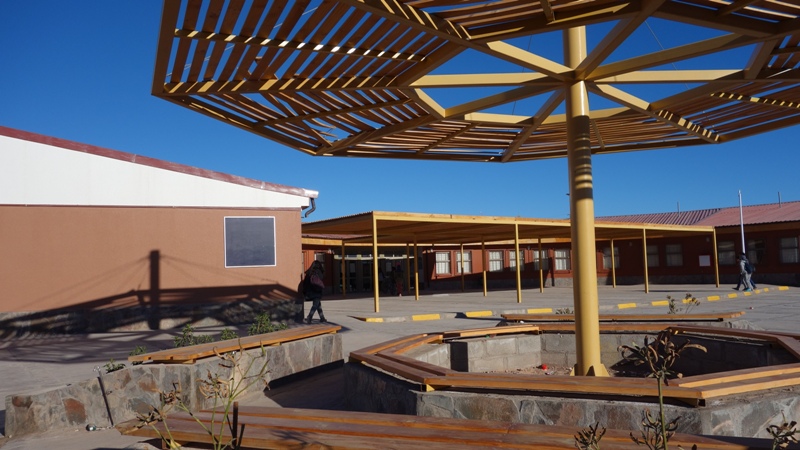
Updated 7/6/17
We visited two schools while in the San Pedro region. The first was a high school in San Pedro itself. A couple of ambassadors came back to help out. They brought teaching materials supplied by NASA. We taught the students how to find features on the moon, and another previous ambassador donated a telescope to the school. This got a bunch of us thinking that if the opportunity arose, we would like to come back and do the same thing. It is considered polite to show up with a small gift, and I had my club order 100 pens to give out to the students. I wasn't sure how the pens would go over with these kids, but they loved them! As I write this back in the US, it is interesting to think that there are about 100 kids in Chile right now walking around using pens that say "New Hampshire Astronomical Society."
The second school was located in the tiny village of Toconao, not far from the entrance to ALMA. Driving down the desolate road, you can see it from a great distance. I have to tell you, from a distance this village does not look promising. I kept wondering why anyone would think to put a dwelling of any kind in this location. Seeing the place sparked all kinds of questions. Where do they get their food and water? As we got closer, we saw a few trucks and cars. Where do they get their gasoline? What do they do with their garbage? We drove through the village in our Toyota HiLux diesel trucks. The school appeared to be one of the nicest buildings in town (a testament to the value the local residents place on education.) There was a giant courtyard/playground ringed with classrooms (I am told this is a typical arrangement for schools in this area.) We were ushered into a classroom where we observed second graders classifying live insects and animals.
Then it was our turn. Each of us broke into groups and taught an aspect of astronomy to the students. I gave a small talk in the library about how to locate craters on the moon. The library had a nice digital projector and was stocked full of books, including Harry Potter, the Lord of the Rings, and Game of Thrones (all in Spanish of course.) The students and faculty couldn't thank us enough, and we left Toconao flush with a sense of accomplishment. This was the emotional heart of the trip.

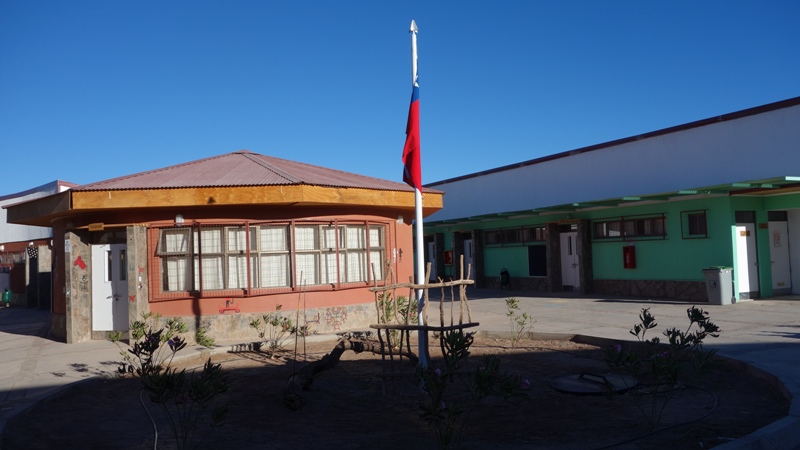
(Above) High school in San Pedro
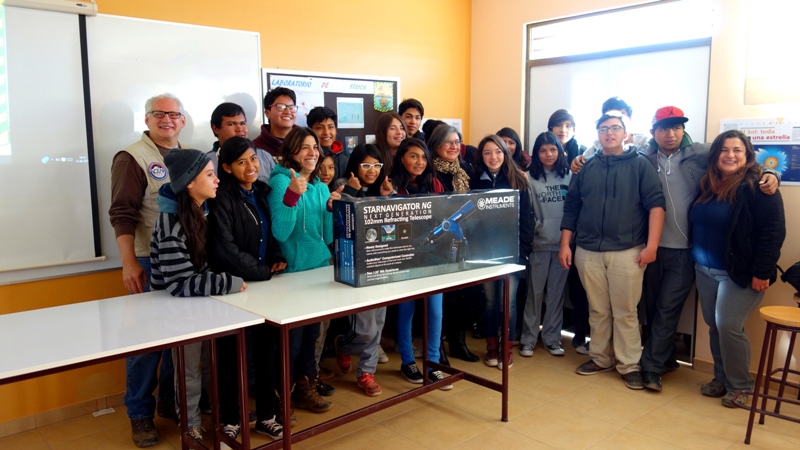
(Above) Telescope donated by former ACEAP ambassador Bill B
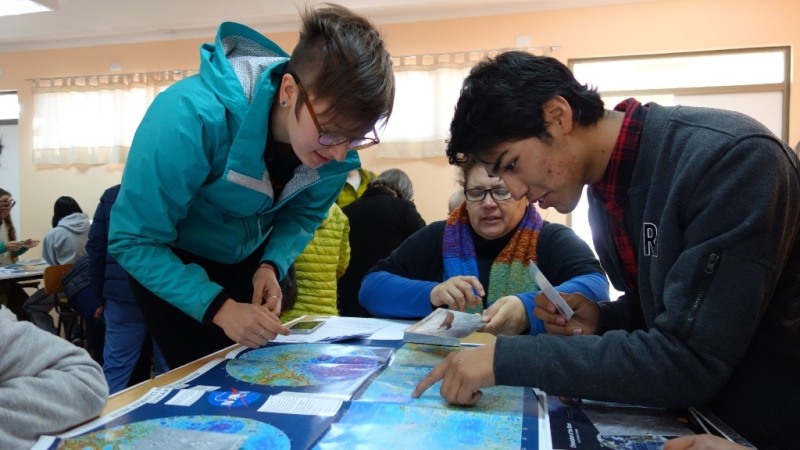
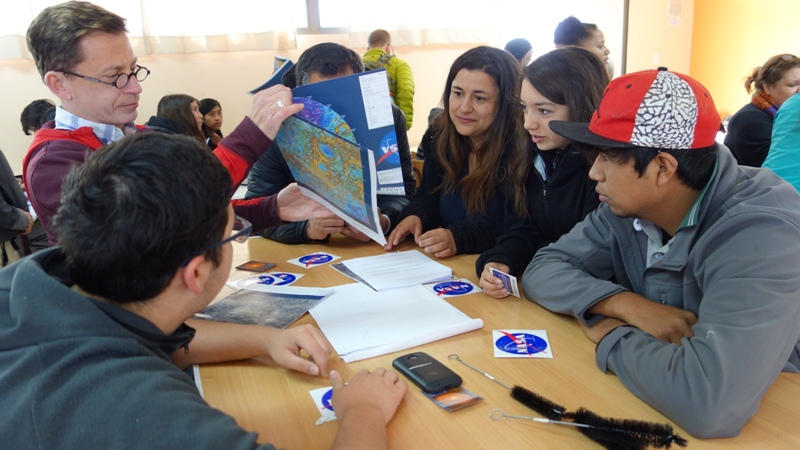
(Above) Teaching at a high school in San Pedro
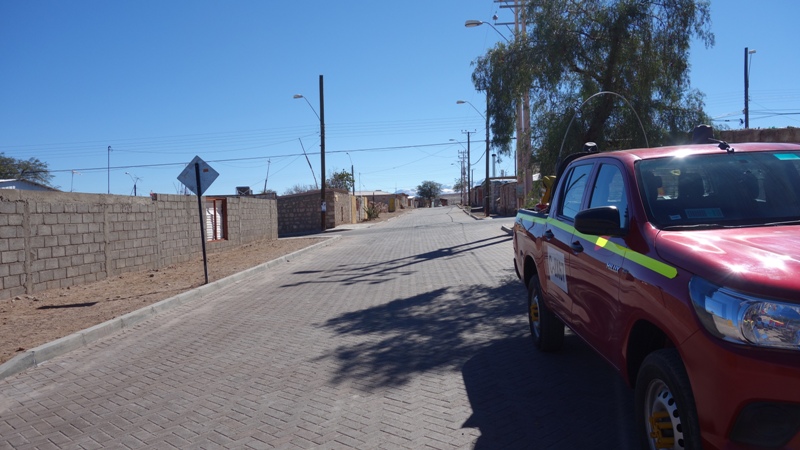
(Above) The streets of Toconao
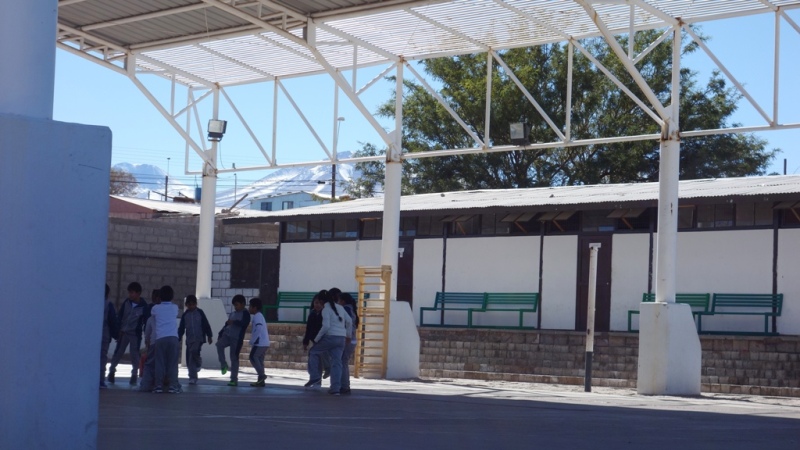
(Above) The school in Toconao. Like the high school, there's a central courtyard surrounded by classroom buildings.
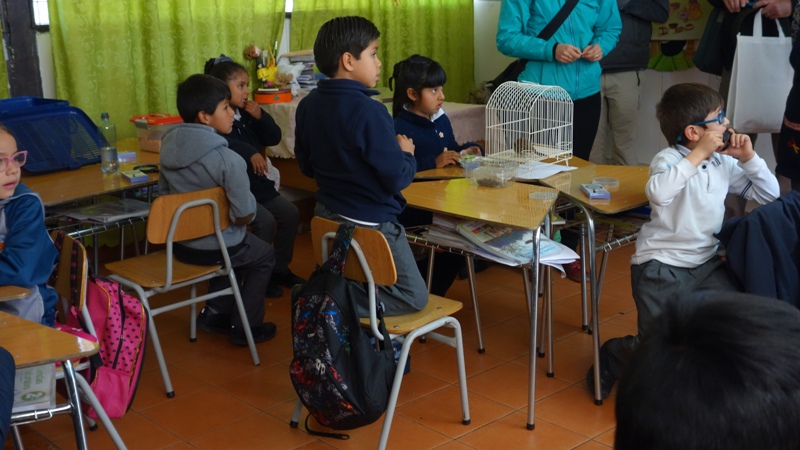
(Above) Observing a second grade classroom
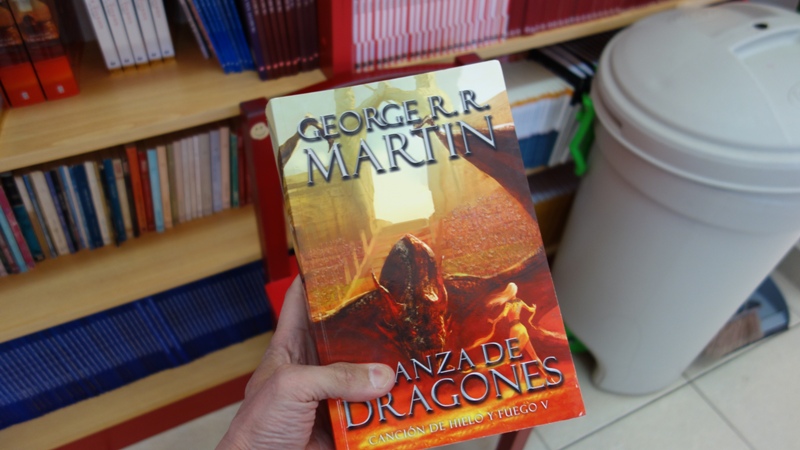
(Above) Look what I found on the school's library shelves!
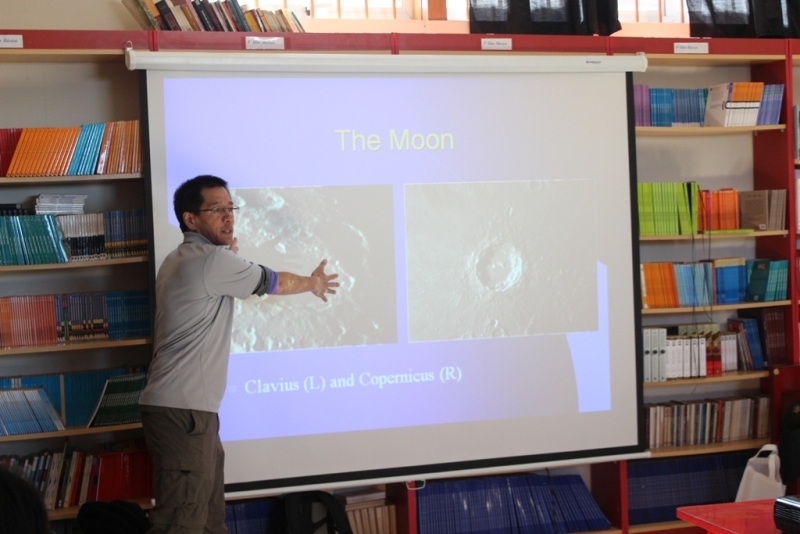
(Above) Teaching how to find craters on the moon
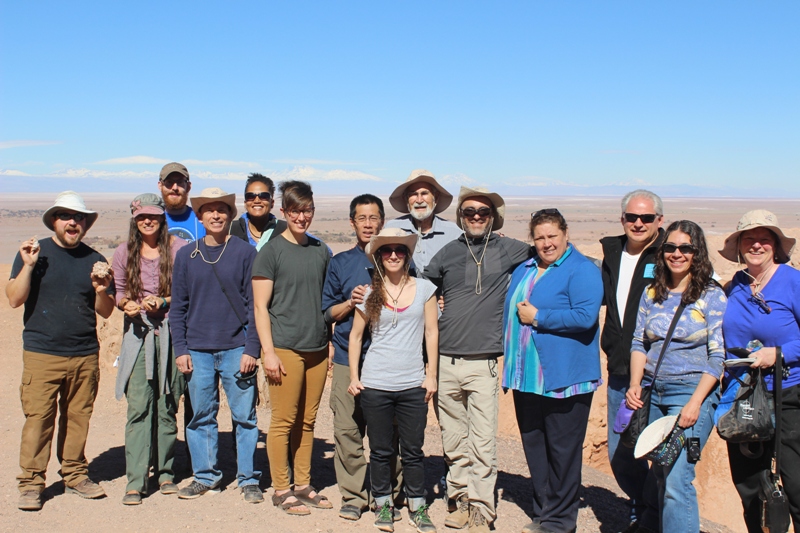 .
.
(Above) The final group shot
We don't take the trip; the trip takes us. I went into the trip expecting to geek out, come home, and move on . I viewed the trip as an ending. While those things did happen, I now view the trip as a beginning. Many of us are planning trips back to the region, if for nothing else than to help supply a great need for teaching in the area. In the end, the trip became more about the people - the friendliness of the locals, camaraderie of new friendships earned through a mutual experience, than anything else. If anyone reading this possesses a thirst for knowledge, a love of astronomy, a desire to learn about other peoples and cultures, or a simple love of adventure, I commend the region to you all.
-Ed
1) Introduction - Ed Goes to Chile!
2) The cities, towns, and villages - Santiago, La Serena, and San Pedro
3) The observatories and scientific installations (Part 1)
3a) The observatories and scientific installations (Part 2)
5) Conclusion (This page)